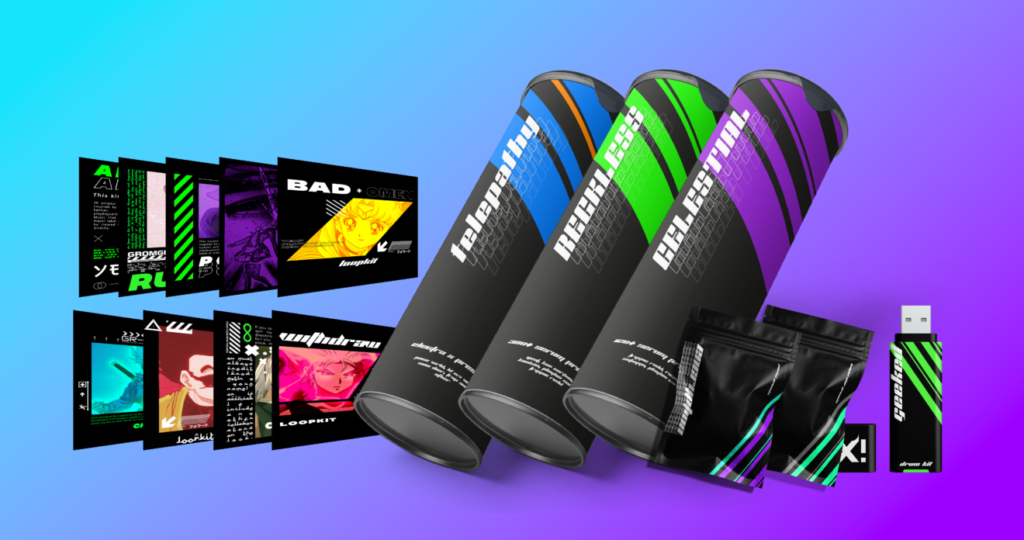When it comes to creating music in genres like rage and hyperpop, the emphasis is often placed on mixing techniques—EQing, compression, and panning. But what many producers overlook is the critical role that sound selection plays in shaping the final track. While mixing can certainly enhance your song, the foundation of a great track starts with the right sounds. Let’s break down why sound selection is just as important, if not more so, than mixing in these high-energy genres.
The Power of Sound Design in Rage and Hyperpop
In rage and hyperpop, the sound palette you choose is what sets your track apart. These genres thrive on chaotic, emotional, and raw sonic textures. Whether it’s the distorted 808s of rage or the glitchy, high-pitched melodies of hyperpop, the quality and character of the sounds dictate the entire vibe of your music.
Here’s why sound selection should be your primary focus:
1. The Right Sounds Give Your Track Instant Character
- Unlike other genres that may rely on intricate mixing to create depth, rage and hyperpop thrive on bold, unapologetic sounds that stand out immediately. When you start with unique sounds, the track feels distinct from the start. You don’t need to do much to them in the mix—what matters is the raw energy you capture from the outset.
- For instance, a well-designed synth lead with a specific type of distortion can be more impactful than a perfect mix. The right distorted lead in hyperpop will resonate with the audience, while a weak lead might get buried, no matter how much you EQ it.
2. Less Mixing, More Expression
- Sound selection in rage and hyperpop is all about expressing emotion through raw sound. When you choose the right 808s, synths, and drums from the start, your track communicates energy without the need for complex mixing tricks.
- For example, a punchy, well-designed kick drum can give the track power right away, allowing you to focus more on composition and arrangement rather than constantly adjusting its mix. If the sound isn’t right to begin with, no amount of EQ will make it feel punchy or aggressive enough.
3. Your Sounds Should Match the Genre’s Aesthetic
- Rage and hyperpop are characterized by their extreme, edgy aesthetics. Hyperpop uses sharp, glitchy, and metallic sounds, while rage incorporates heavy distortion and gritty 808s. The key to creating authentic tracks in these genres is aligning your sounds with their signature characteristics.
- Using an 808 sample that lacks the deep sub-bass or isn’t distorted enough will make your beat feel weak, no matter how much you tweak it in the mix. Similarly, a clean, smooth lead synth in hyperpop will clash with the genre’s chaotic, high-energy vibe.
Sound Kit Suggestions:
- Hyperpop Kits like HyperXplosion or PopRage offer distorted synths, glitchy loops, and dramatic effects designed to give you that hyper-aggressive sound right off the bat.
- For rage beats, look for kits like DarkMatter or RageWave, which focus on powerful 808s, distorted kicks, and gritty melodies that don’t need much mixing to make an impact.
4. Time-Saving and Efficiency
- Choosing the right sounds upfront saves you hours of time spent on post-production adjustments. If you start with weak or generic sounds, you’ll spend far too much time in the mix trying to make them fit, which can delay the creative process.
- Instead, when you choose high-quality, genre-specific sounds that fit the vibe you’re going for, you can jump straight into making music, allowing your creative flow to lead the track. Once your sounds are in place, the mixing process becomes much easier—just adding some minor tweaks rather than drastic changes.
5. Sound Selection Sets the Mood
- In rage and hyperpop, mood is everything. The texture of your sounds directly affects the energy of your track. Whether it’s the ethereal melodies in hyperpop or the intense, punchy drums in rage, the right sound choices instantly communicate the vibe you’re aiming for.
- For example, a deep, distorted 808 immediately sets a darker, more intense tone in rage music. Meanwhile, a sparkling, distorted lead can create a frenetic, energetic feel in hyperpop.
How to Choose the Right Sounds for Rage and Hyperpop
- Look for aggressive, experimental sounds. Rage and hyperpop thrive on chaotic, unpolished, and raw textures. Look for sounds that don’t need to be cleaned up too much, as these genres embrace imperfection.
- Use sounds that complement each other. Don’t over-complicate things with too many elements. A few well-chosen elements like a distorted synth lead, powerful 808s, and punchy drums can go a long way.
- Experiment with presets. High-quality Serum presets or custom-built sound kits designed for rage or hyperpop genres already contain the heavy distortion, glitchy textures, and experimental sounds needed for a standout track.
Conclusion
In rage and hyperpop production, sound selection is everything. While mixing is essential, it’s the foundation—the sounds themselves—that truly shape your track. Start with the right sounds, and your mix will practically take care of itself. So, rather than focusing too heavily on mixing techniques from the start, invest your time and energy into choosing the right sounds. The right sound kit can set your track on fire before you even touch the mixing console.
Ready to get started? Check out our exclusive Rage and Hyperpop Sound Kits to take your tracks to the next level. No more tweaking—just plug and play.
